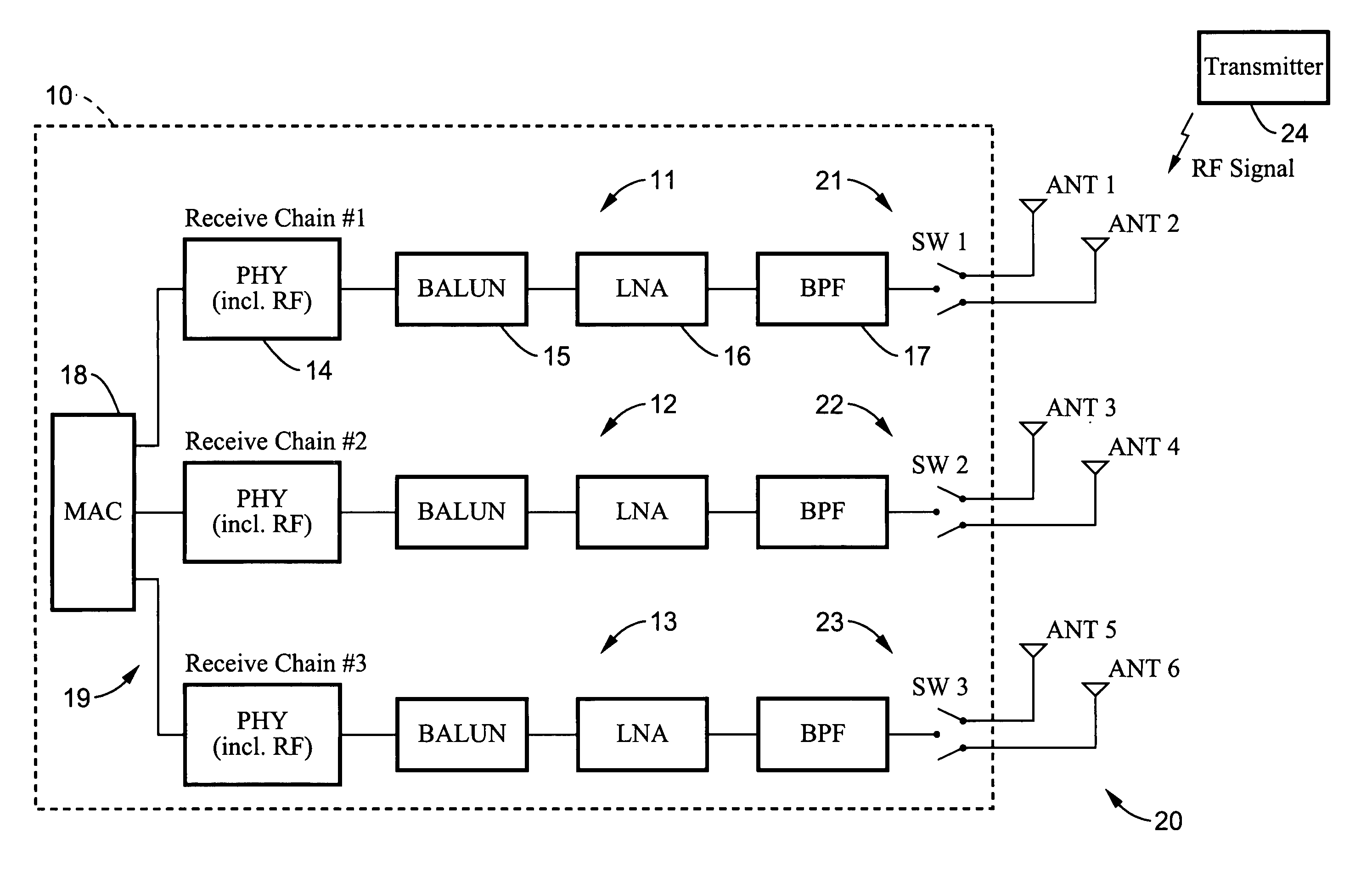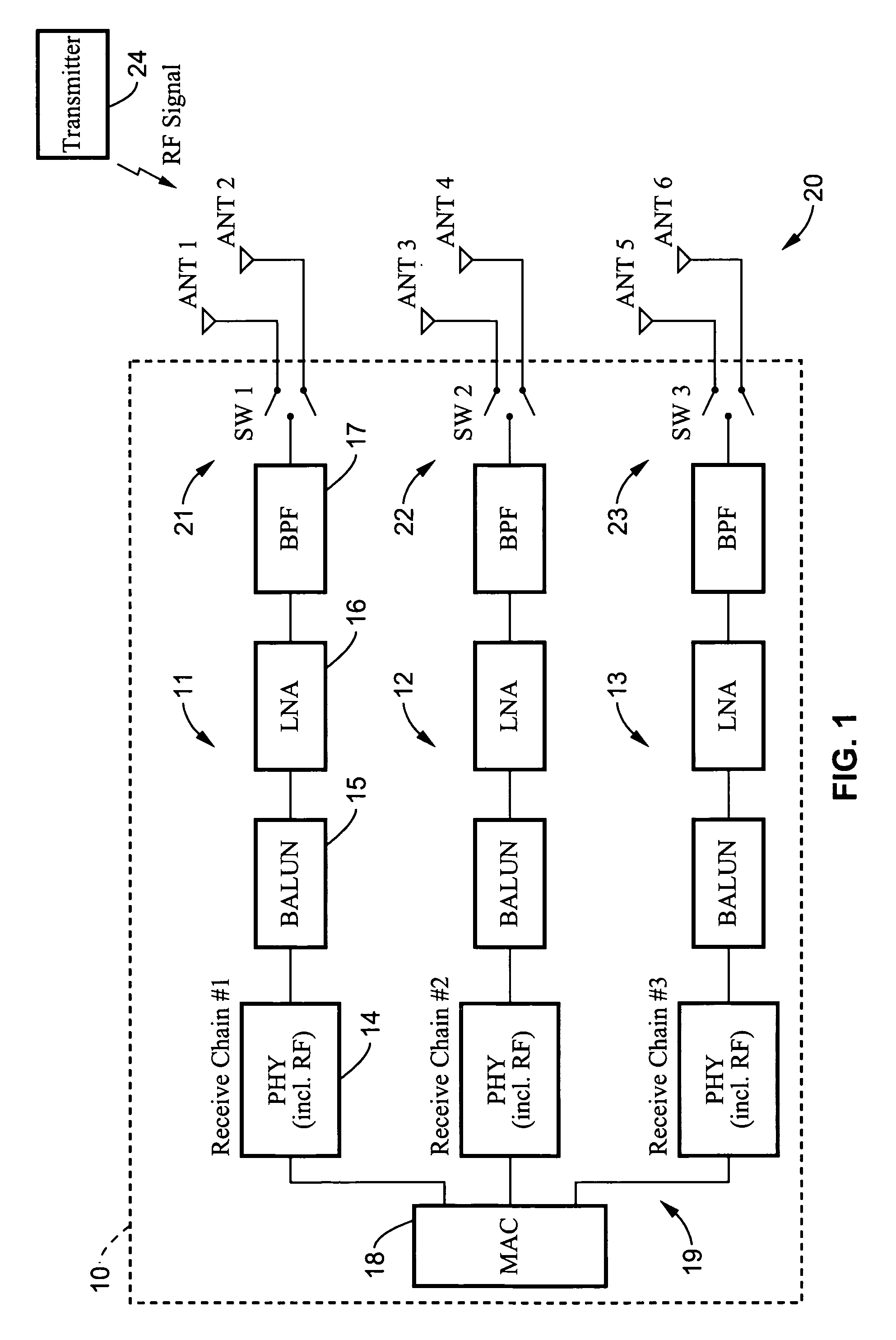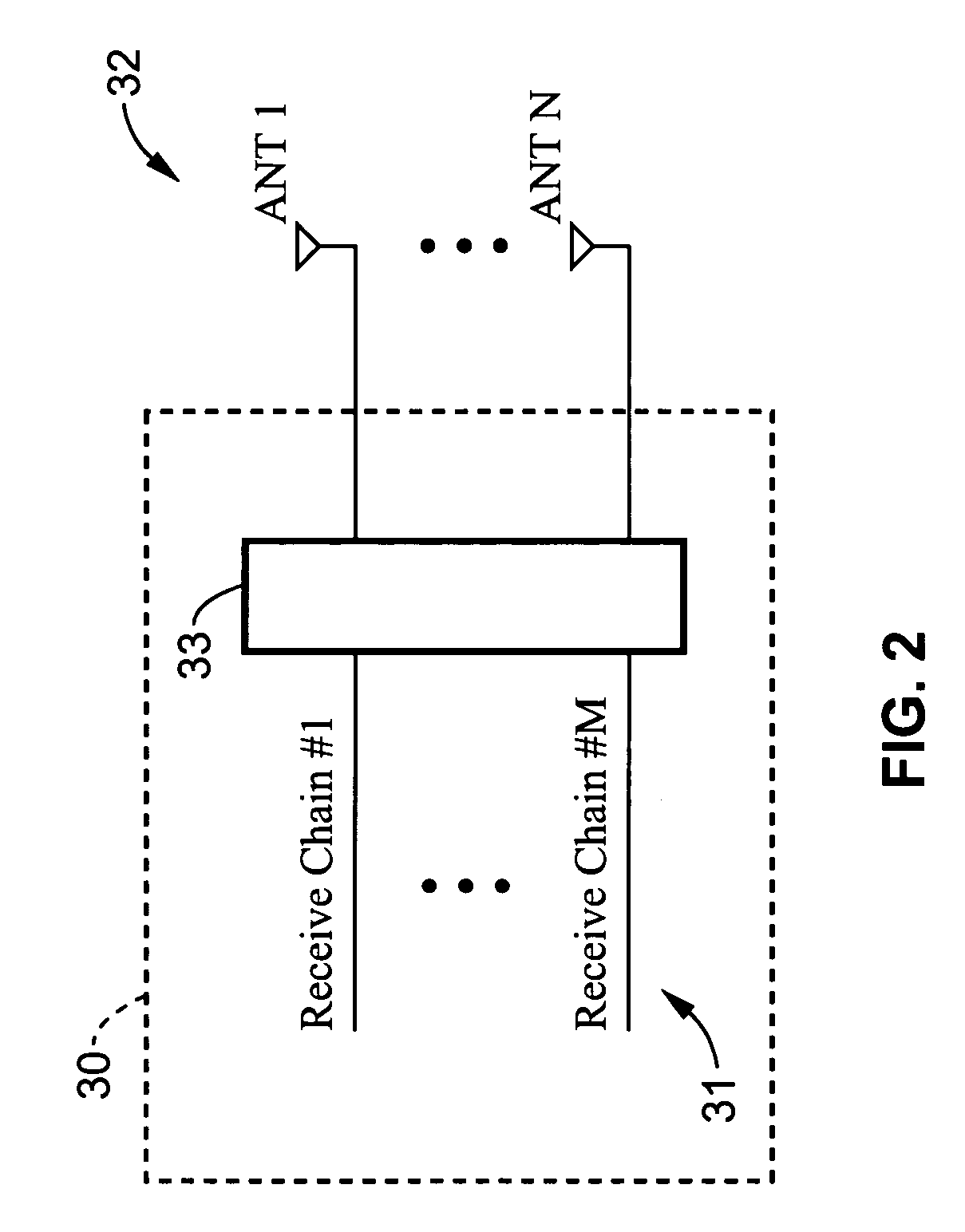Method and apparatus to resist fading in mimo and simo wireless systems
a wireless communication and wireless technology, applied in multiplex communication, duplex signal operation, polarisation/directional diversity, etc., can solve problems such as constructive and destructive interference, face performance problems, negative affecting system performance, etc., and achieve the effect of reducing rf fading
- Summary
- Abstract
- Description
- Claims
- Application Information
AI Technical Summary
Benefits of technology
Problems solved by technology
Method used
Image
Examples
Embodiment Construction
[0029] Referring more specifically to the drawings, for illustrative purposes the present invention is embodied in the apparatus and methods generally shown in FIG. 1 through FIG. 5. It will be appreciated that the apparatus may vary as to configuration and as to details of the parts, and that the methods may vary as to the specific steps and sequence, without departing from the basic concepts as disclosed herein.
[0030] The invention applies to systems for the wireless RF propagation of signals, including particularly RF propagation of signals transmitted from 802.11 wireless local area networks (WLANs). The basic structures and operation of these types of systems is well known in the art. The systems include transmitters and receivers, or in combination transceivers, with associated antennas. The systems operate generally on various modulation and demodulation schemes. Information is typically transmitted in packets.
[0031] The transmitters and receivers of a wireless system can b...
PUM
 Login to View More
Login to View More Abstract
Description
Claims
Application Information
 Login to View More
Login to View More - R&D
- Intellectual Property
- Life Sciences
- Materials
- Tech Scout
- Unparalleled Data Quality
- Higher Quality Content
- 60% Fewer Hallucinations
Browse by: Latest US Patents, China's latest patents, Technical Efficacy Thesaurus, Application Domain, Technology Topic, Popular Technical Reports.
© 2025 PatSnap. All rights reserved.Legal|Privacy policy|Modern Slavery Act Transparency Statement|Sitemap|About US| Contact US: help@patsnap.com



